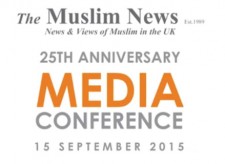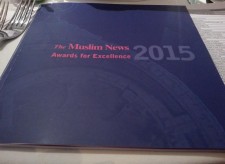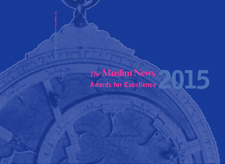Elham Asaad Buaras
The latest data on Muslims released from the 2021 census has revealed that they are nearly four times more likely to live in overcrowded housing, are less likely to own their homes, and are more likely to live in socially rented homes in England and Wales. The data has reignited calls for the Government’s Levelling Up agenda to concentrate on the UK’s young Muslim communities.
Less than half (45.6%) of Muslims live in households that own their home, significantly lower than the population average of 62.8%, revealed the census.
Released on March 27, the data also revealed Muslims had the lowest percentage of people living in households that owned their homes outright (16%).
The Office of National Statistics (ONS) explains that Muslims are less likely to own their homes due to their average age of 27, compared to 40 for the general population, meaning they may not have had time to pay off a mortgage or loan.
In contrast, 77.7% of Sikhs lived in households that owned their home. This was shaped by people living in households that “own with a mortgage, loan, or shared ownership” (49.8%, compared with 35.6% of the rest of the population). The remaining 27.9% of Sikhs lived in homes their household owned outright (compared with 27.1% of the overall population). Christians, who have an average age of 51, were 8.9% more likely than the general population to live in homes that they owned outright.
Muslims also had the highest percentage (26.6%) of people living in “socially rented” homes, ten percentage points higher than the overall population. And 32.7% of Muslims experienced overcrowding, four times more compared with 8.4% of the overall population.
However, as those who reported “no religion” also had a younger average age (32 years) but had the lowest percentage of people living in overcrowded homes (6.2%), age alone could not be an “explanatory factor in the differing percentages of overcrowding.”
In a statement to The Muslim News, the Muslim Council of Britain (MCB) said the latest census data illustrated an “urgent” need for a review of the government’s housing policy. “26.6% of Muslims live in socially rented housing, consistent with figures from the 2011 and 2001 censuses, respectively.
With council housing stock decreasing and new builds falling short of assisted housing needs, an urgent government review of social housing policy is required, alongside improved regulation of the private housing sector,” said an MCB spokesman.
Muslims account for a disproportionately high proportion of unpaid carers (7.2%) among people aged 55 to 59, the age group with the largest proportion of unpaid carers.

Graph: Religion by housing tenure, England and Wales, 2021. This analysis focuses on people within households. Percentages have been calculated out of the overall population of each religious group using rounded data, as such totals may not add up to 100%.
(Source: Census 2021: ONS)
Muslims had the highest percentage of “economically inactive” people, 41.9%, followed by 30.3% for those who reported, “Other religion” (17.2 and 5.6% higher than the overall population, respectively). There is also a higher percentage of Muslims, who are unemployed relative to the overall population, 6.7% versus 4.4%.
Economically inactive Muslims of working-age were the most likely to be studying, at 13.8%, compared with 7.3% of the overall population. This cohort was also most likely to be looking after family and home, with 16.1% of economically inactive Muslims giving this reason, compared with 5.8% for the overall population.
More than two-thirds (2.6 million) of the Muslims in England and Wales reside in the councils with the highest unemployment rates, where more than one in 20 people of working age are unemployed.
A third of the population in Birmingham and Newham identified as Muslim, and these are — together with Wolverhampton — the local authorities with the highest (7%) unemployment rate among those of working age.
About 68% of England and Wales’s 3.8 million Muslims live in areas with the highest unemployment, compared with 26% of Christians and 25% of respondents who said they did not follow a religion. In terms of unpaid care work, Muslims make up a disproportionately high proportion of unpaid carers (7.2%), among those 55 to 59 years old, who make up the highest percentage.
With 84.5% of Muslims under 50, compared to 62% of the overall population, the percentage is high, even if it is lower than the average population (16.5%). In the 60–64 age range, Buddhists and Muslims had the largest percentages of unpaid carers (14.3% and 13.2%, respectively).
These two groups also had the highest percentages of people providing 50 hours or more of unpaid care in the 60- to 64-year-old age group (5.5% for the “Muslim” group and 4.1% for the “Buddhist” group). This “peak” in hours of unpaid care was at a younger age than for all other religious groups, which peaked either between 75 and 79 years old or between 80 and 84 years old.
Jesse Ransley from the ONS said, “It’s important to recognise that age profiles vary among the different religious affiliation groups in England and Wales.
“Those who identified as Christian, for example, tended to be older, and those who identified as Muslim younger. But this by no means accounts for all the differences in life outcomes for people of different religious affiliations we see in today’s analysis, with some stark inequalities evident.”
Reacting to the negative employment and unpaid care statistics, MCB said, “There are key associated areas of improvement.” MCB explained, “Despite Muslims being more likely to be looking after family and home, there is a significant improving trend in Muslim women in professional occupations.
Muslims are also an increasingly younger demographic, pursuing education at higher levels. Although this may result in ‘economic inactivity’, it also accounts for a significant improving trend among Muslims aged 16-24 with Level 4 qualifications (degree level)—an indicator of social mobility.”
However, MCB said, “Given the sheer potential of increasingly educated Muslim youth, the government must begin levelling up’ for British Muslims by addressing key areas of concern such as housing and tackling barriers to securing and retaining employment across professional occupations.”
The Muslim News contacted the Department for Levelling Up, Housing, and Communities for comment.
(Credit: Matt Biddulph/Flickr)
















